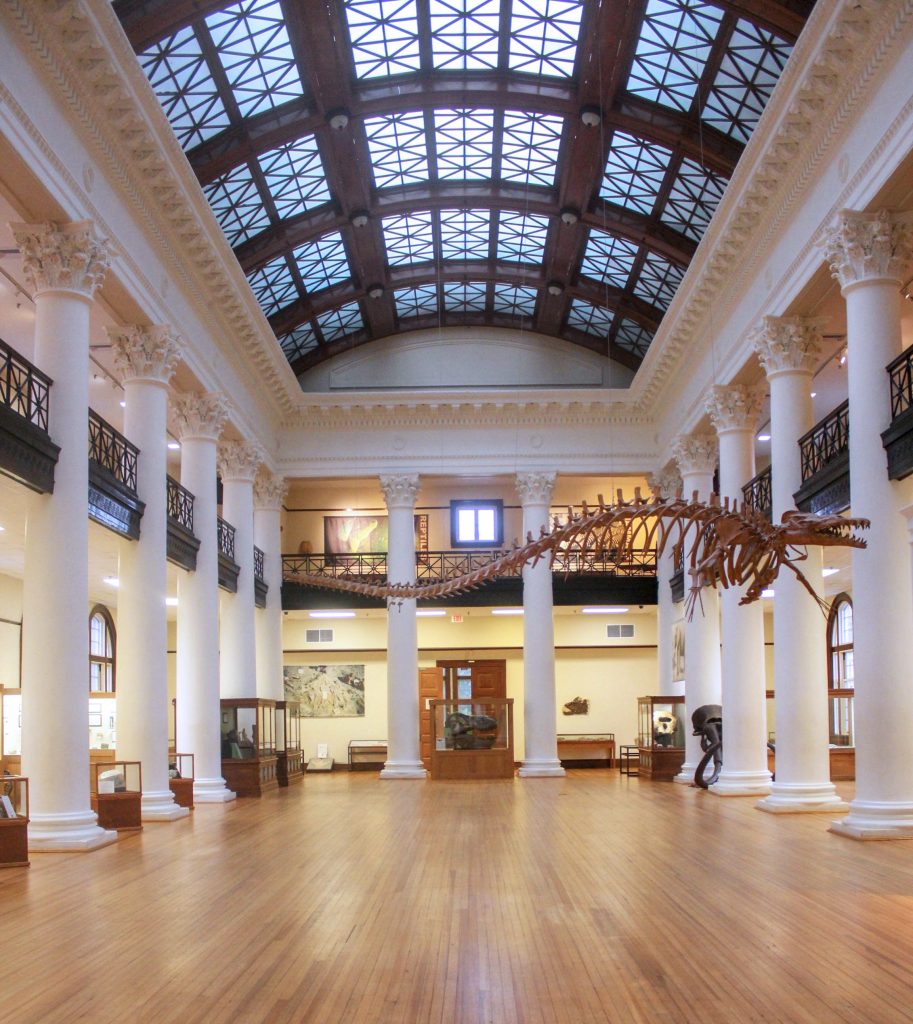
For more than 110 years, the Alabama Museum of Natural History has celebrated Alabama’s natural history through exhibitions, collections, and quality programs of teaching, research, and service. Explore Alabama through remarkable exhibitions and specimen collections detailing the state’s natural history and ancient past. Venture out and experience Alabama’s natural history and its beautiful rivers and trails firsthand through our camps, expedition, and special programs. Discover what makes Alabama special with Museum events and programming.
The Museum’s Building History
The Alabama Museum of Natural History, with thousands of invaluable specimens from all lines of scientific research, is a lasting monument to the energy, labor, and love exhibited by Dr. Eugene Allen Smith. He was appointed as state geologist in 1873 and Dr. Smith spent nearly 40 years surveying, mapping, and collecting scientific specimens throughout the state of Alabama.
According to historic records, the cornerstone for Smith Hall was laid on May 28, 1907. Alumni President Hill Ferguson placed in the cornerstone “documents and souvenirs which would help some yet unborn generation glimpse the glory of the day.” The construction of Smith Hall was completed in the fall of 1909 and it was “formally dedicated with appropriate pomp and ceremony at Commencement, May 5, 1910.”
Smith Hall consists of a three-story central section built to house the Alabama Museum of Natural History and has a two-story north and south wing. The north wing originally housed the Department of Biological Sciences and the matching south wing was for the Department of Geological Sciences. Both wings still contain classrooms and labs used by students today. The basement currently houses the Museum’s teaching collections and field research equipment.
The Museum facade, designed in the Classical Revival style, features an engaged colonnade of eight Ionic columns raised above a full basement. The main entrance on the ground level is through a massive pedimented stone doorway, flanked by standing lamps. The Atrium Gallery is a spacious center hall dominated by a sweeping staircase made of Alabama marble and supported by Alabama-manufactured iron. The staircase leads to the Grand Gallery Exhibition Hall above. The newel posts at the base of the staircase contain cartouches with “U of A” inscribed in the center.
The architecture of the Alabama Museum of Natural History reflected, on a more modest scale, the design and layout of the great natural history museums then only recently constructed in Chicago, New York and Washington. The Grand Gallery on the second floor is surrounded by a colonnade of Corinthian columns which support a full entablature with a highly enriched cornice. Museum exhibits are housed in glass and polished wood cases on the second floor and along the third-floor mezzanine. Above, spanning the colonnade is a large glass roof that floods the interior with natural light. The grand sunlit room is one of the most beautifully proportioned interiors on campus – perhaps, in Alabama.